Mt. Everest and Kala PattarKala Pattar (or Kala Patthar) is one of the finest accessible viewpoints on the Nepalese side of M. Everest, and is small summit on the flank of Pumori. Standing at 5,545 m (18,192 ft), it has become one of the most popular trekking destinations in the region, offering superlative views of the world’s highest peak and its neighbours. The trio of Everest, Lhotse and Nuptse provide most of the ice for the Khumbu Glacier. The main accumulation area is the Western Cwm (= Welsh for valley or cirque), from where ice flows down the treacherous Khumbu Icefall into the main debris-mantled tongue of the glacier. These photographs show the characteristics of the upper Khumbu glacier and surrounding peaks from Kalar Pattar and its south ridge. From these peaks numerous avalanches of snow, ice and rockfall, adding to the accumulating mass of the glacier.
|
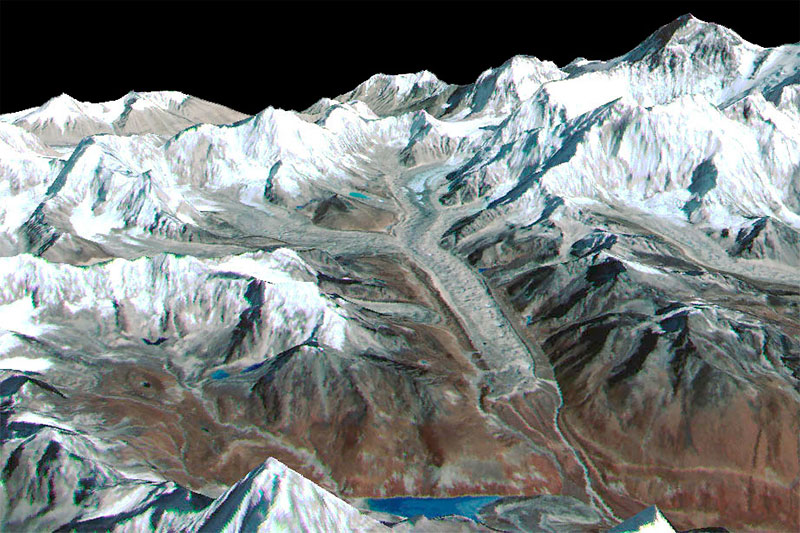 Digital elevation model (DEM) derived from ASTER satellite imagery by Duncan Quincey. | 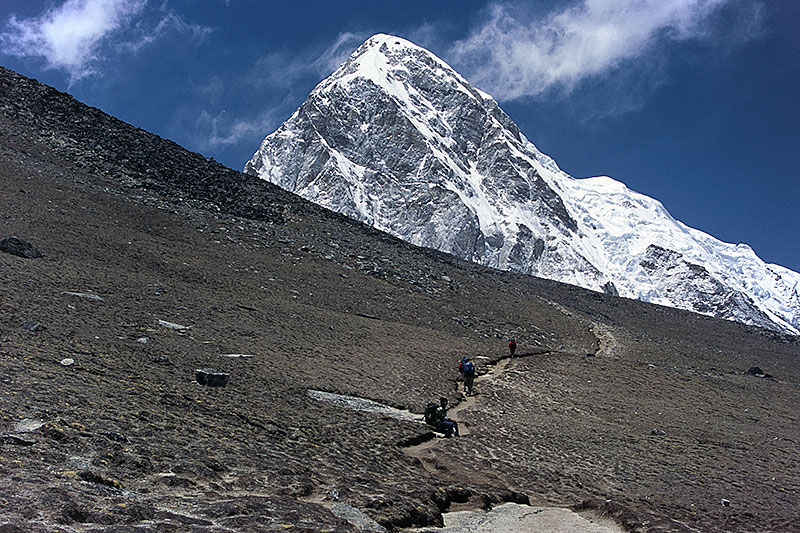 The grassy spur on the lower slopes of Pumori that leads up to Kala Pattar. | 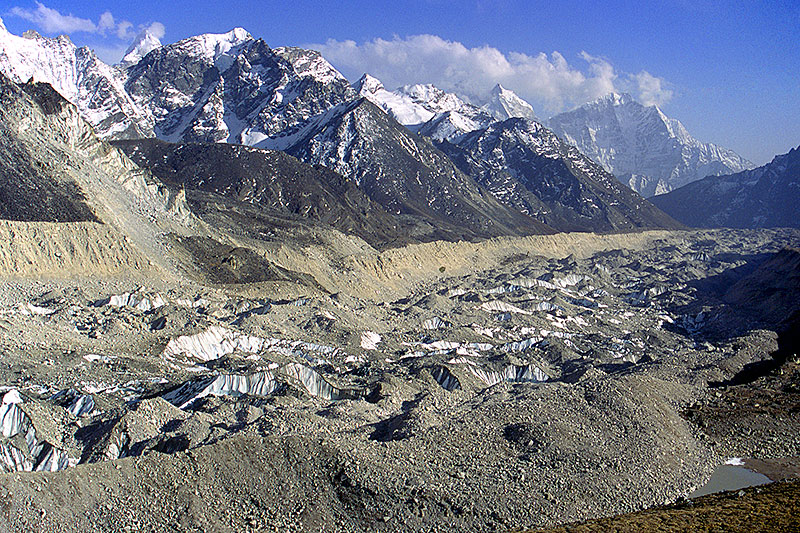 View of lower Khumbu Glacier from the south spur of Kala Pattar. The prominent peak on the left is Ama Dablam. | 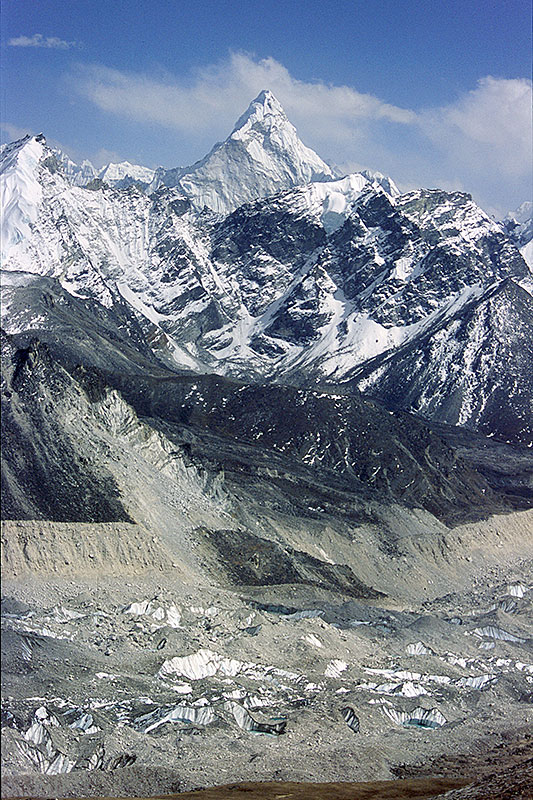 Telephoto view of Ama Dablam. Directly below is zone where the Little Ice Age moraine has slumped down towards the lowered glacier surface. |
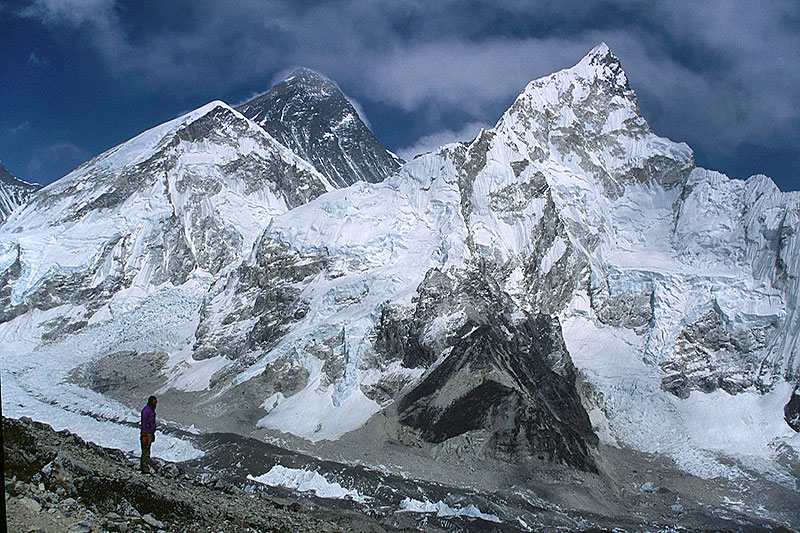 The classic view of Everest (left), Nuptse (right) and Khumbu Glacier from near the top of Kala Pattar. | 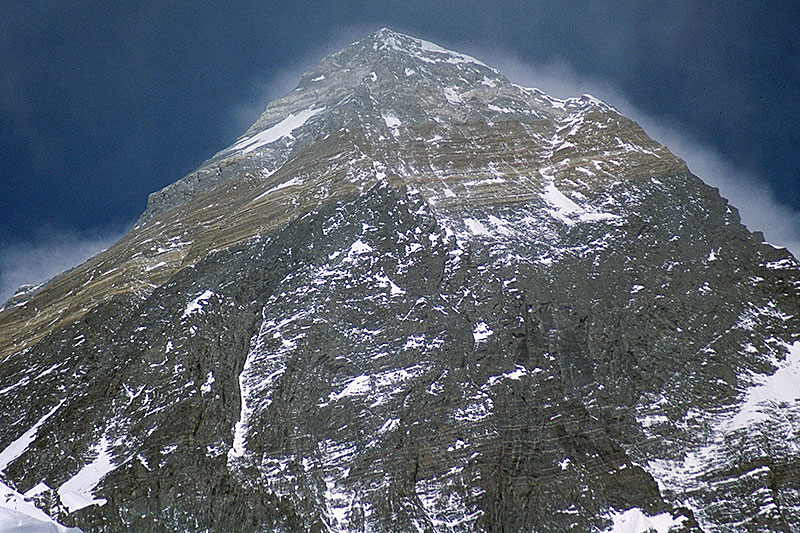 The rocks of the Everest region are mainly of granite and gneiss, but the summit of Everest itself is composed of 250 m of fossiliferous marine limestone and shale of Ordovician age. The well-known “Yellow Band” between consists of slightly metamorphosed rocks (marble, schist and phyllite). | 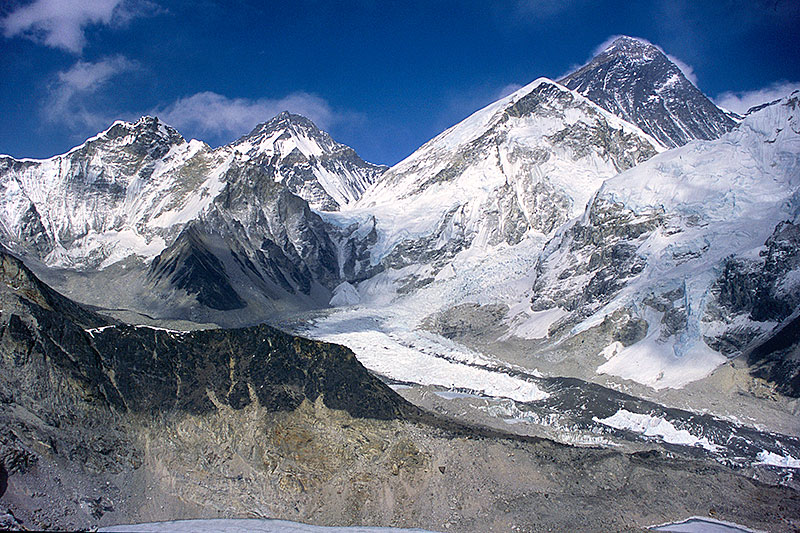 The famous Khumbu Icefall, which represents the main route for climbers on the Nepalese side of Everest. Crevasses and collapsing séracs are a constant threat, and many people have lost their lives here. | 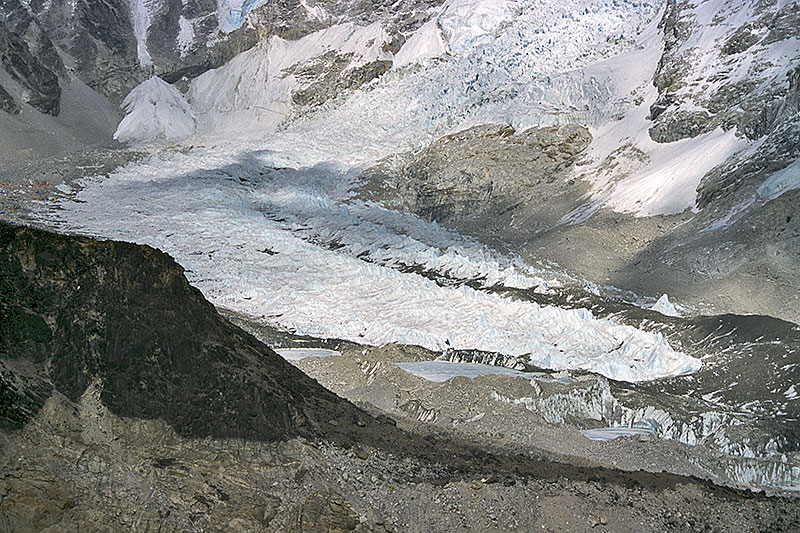 The base of the Khumbu Icefall with debris and frozen ponds. Everest Base Camp is on the far left. |
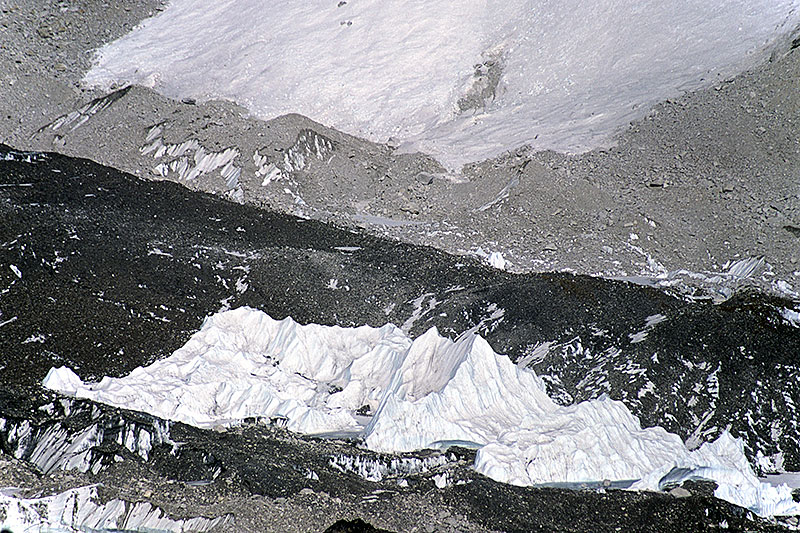 Telephoto of ice pinnacles at the base of the Khumbu Icefall. Exposed ice is only visible for a short distance below the icefall, before the glacier becomes totally debris-mantled. | 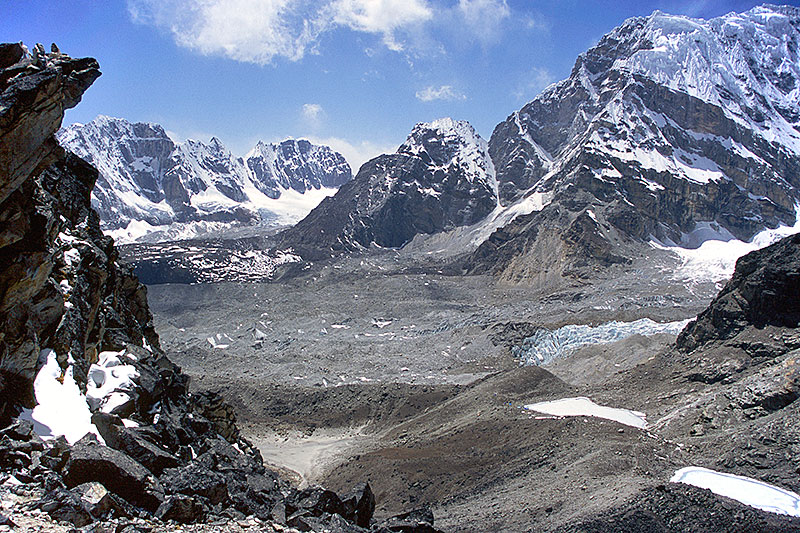 The largely debris-covered Changri Shar Glacier is the largest tributary to Khumbu Glacier, and is crossed near the confluence en route to Kala Pattar. | 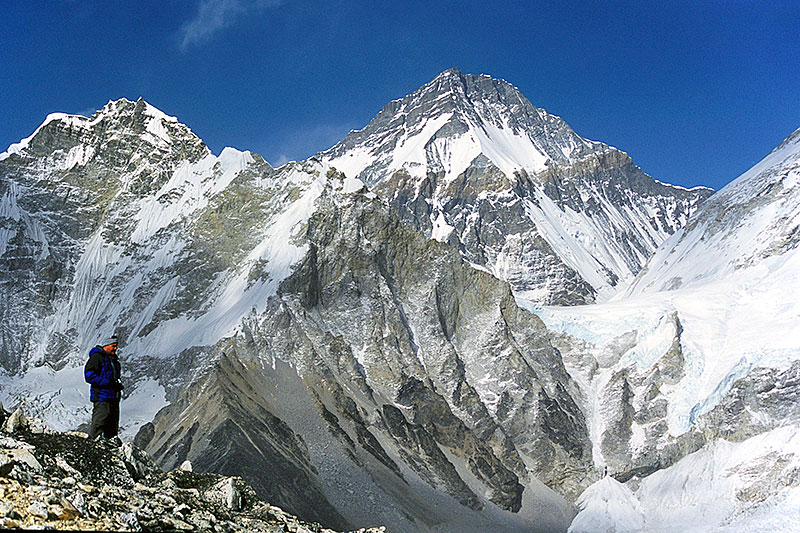 Outlying peaks of Mt Everest viewed from Kala Pattar, with Duncan Quincey looking on. | 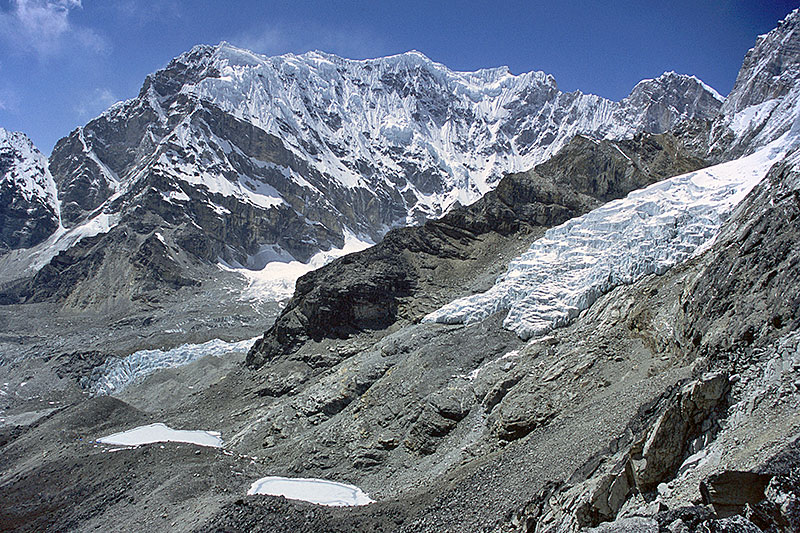 A steep cold-based glacier with frozen moraine-enclosed ponds below. Changri Shar Glacier in the background (left). |
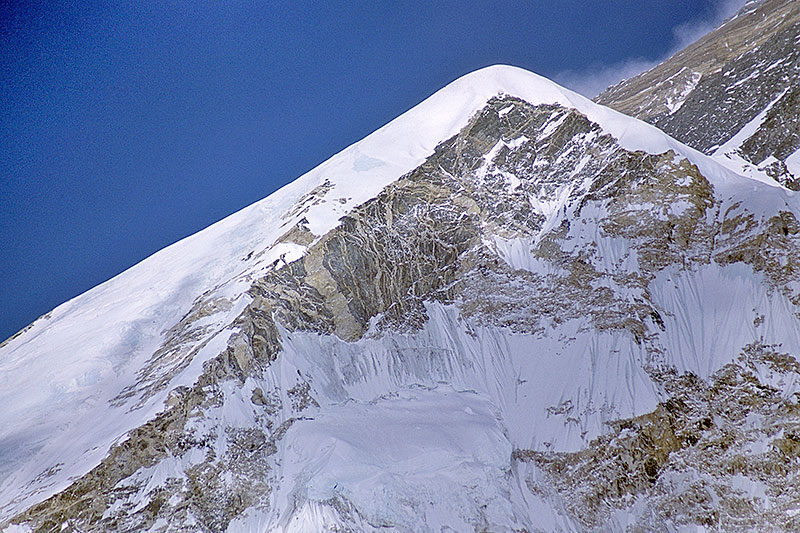 A small ice cap on one of the subsidiary peaks of Mt Everest. Dykes intersect the granite bedrock below. | 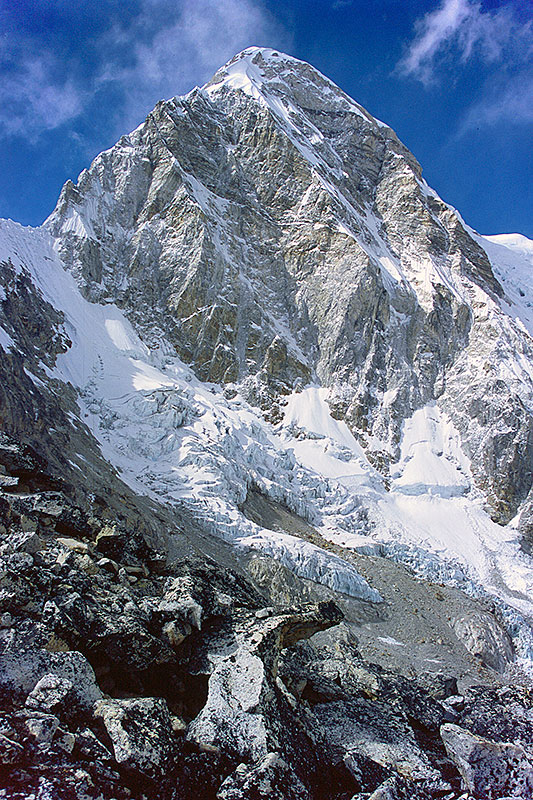 The face of Pumori overlooking lower Khumbu Glacier, carries a small, cold-based, avalanche-prone glacier. | 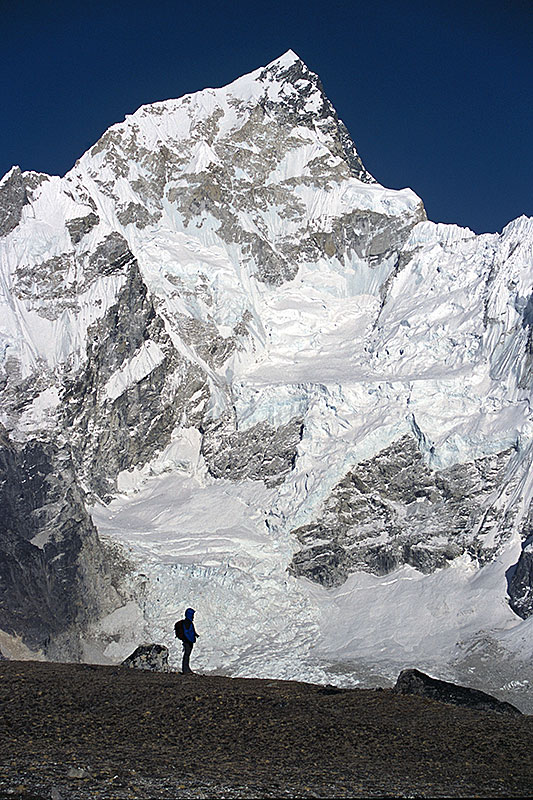 Telephoto view of an arête on Nuptse with fluted snow below. | 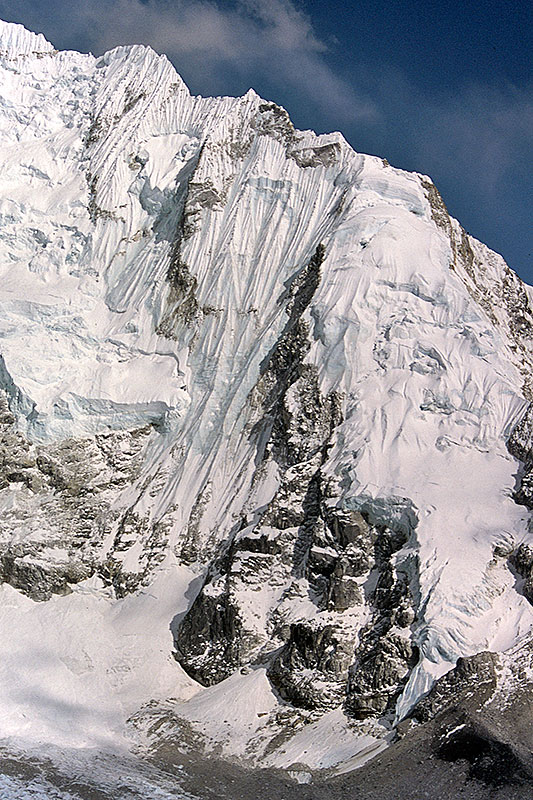 Telephoto view of an arête on Nuptse with fluted snow below. |
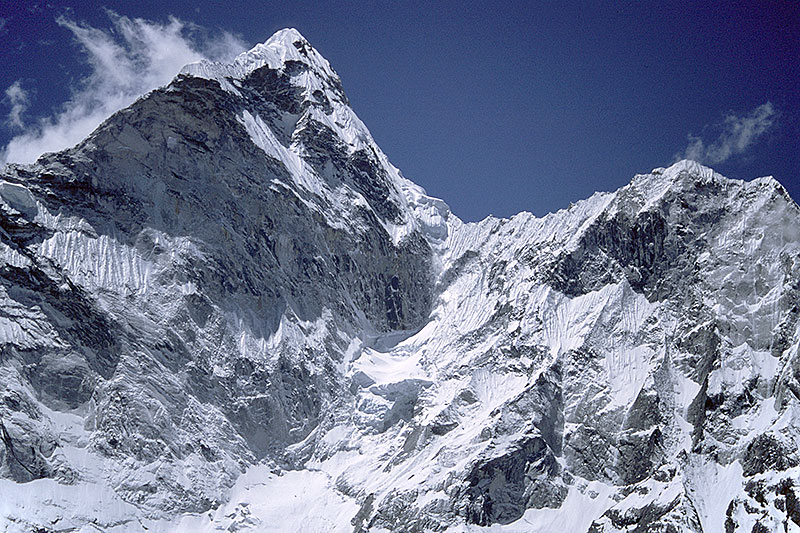 Small hanging glaciers on the west face of Nuptse overlooking Khumbu Glaciers. These avalanche-prone glaciers are one of the major sources of accumulation on Himalayan glaciers. | 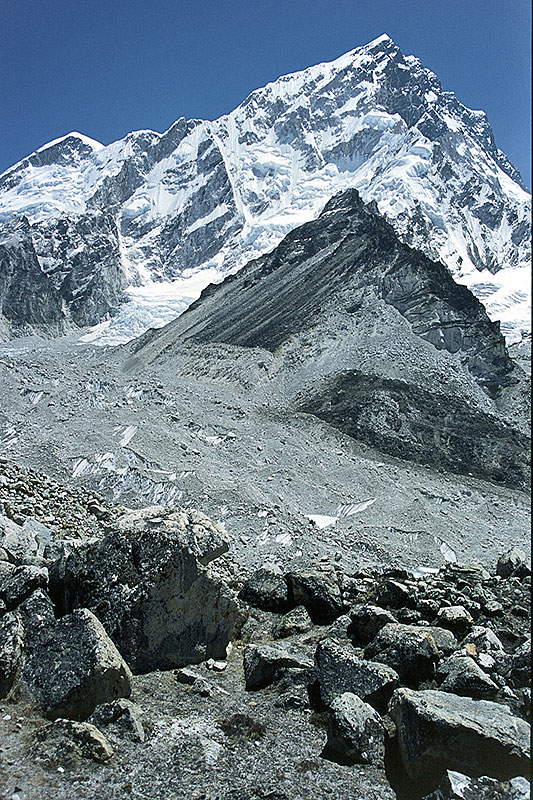 The triangular patch of bare ground in front of Nuptse (middle of image) represents a major valley-side collapse above debris-mantled Khumbu Glacier. | | |
| Photos Michael Hambrey, April-May, 2003 |